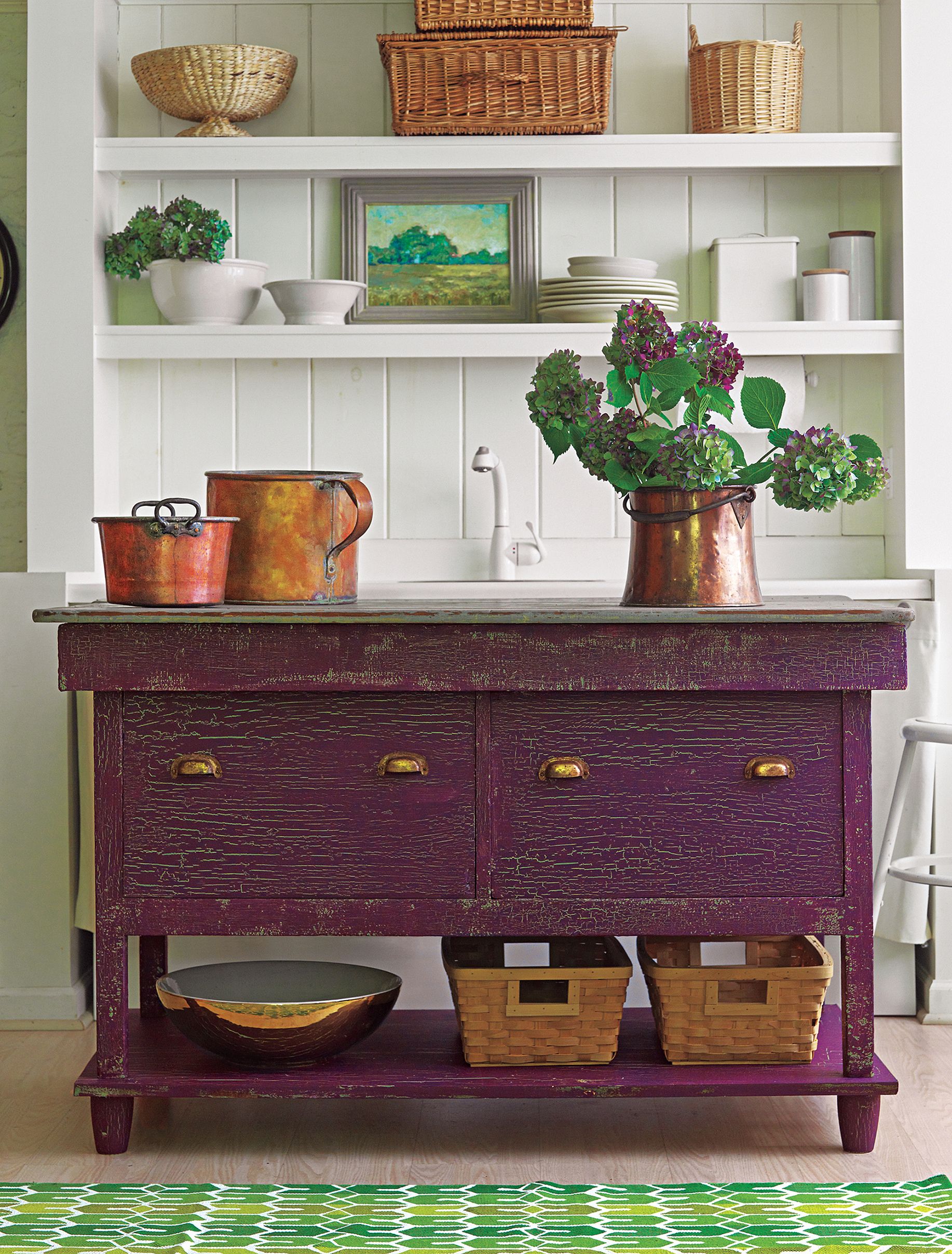Vintage furniture lovers spend years tracking down painted pieces with the perfect aged look, but you can mimic the style on any furniture with crackle-finish painting—even if it’s brand new. This method uses a special crackle medium between two contrasting paint colors, resulting in a beautifully distressed appearance. Whether you’re working with an antique piece or want to give new furniture a timeworn feel, mastering the crackle finish technique can transform your home decor.
Project Details
The crackle finish method is relatively easy to execute, with the crackle medium doing most of the work for you. The process typically takes about two hours spread over two days, allowing for proper drying time between coats.
To achieve the best results, you’ll need these supplies:
- A 3-inch nylon-polyester paintbrush
- A sponge for cleaning the furniture
- Clear protective coat (optional)
- Crackle medium
- Cut bucket and liners for paint mixing
- Flat latex paint in two contrasting colors
When applying a crackle finish, work in a well-ventilated area and protect your work surface. The crackle effect can vary depending on application thickness and the drying time. For larger cracks, apply a thicker layer of crackle medium and allow it to dry longer. For finer cracks, use a thinner layer and a shorter drying time.
Remember that the base coat color will show through the cracks, so choose your colors wisely. A light base coat with a darker top coat often creates a striking contrast, while two similar shades can result in a more subtle, weathered look.
Tip
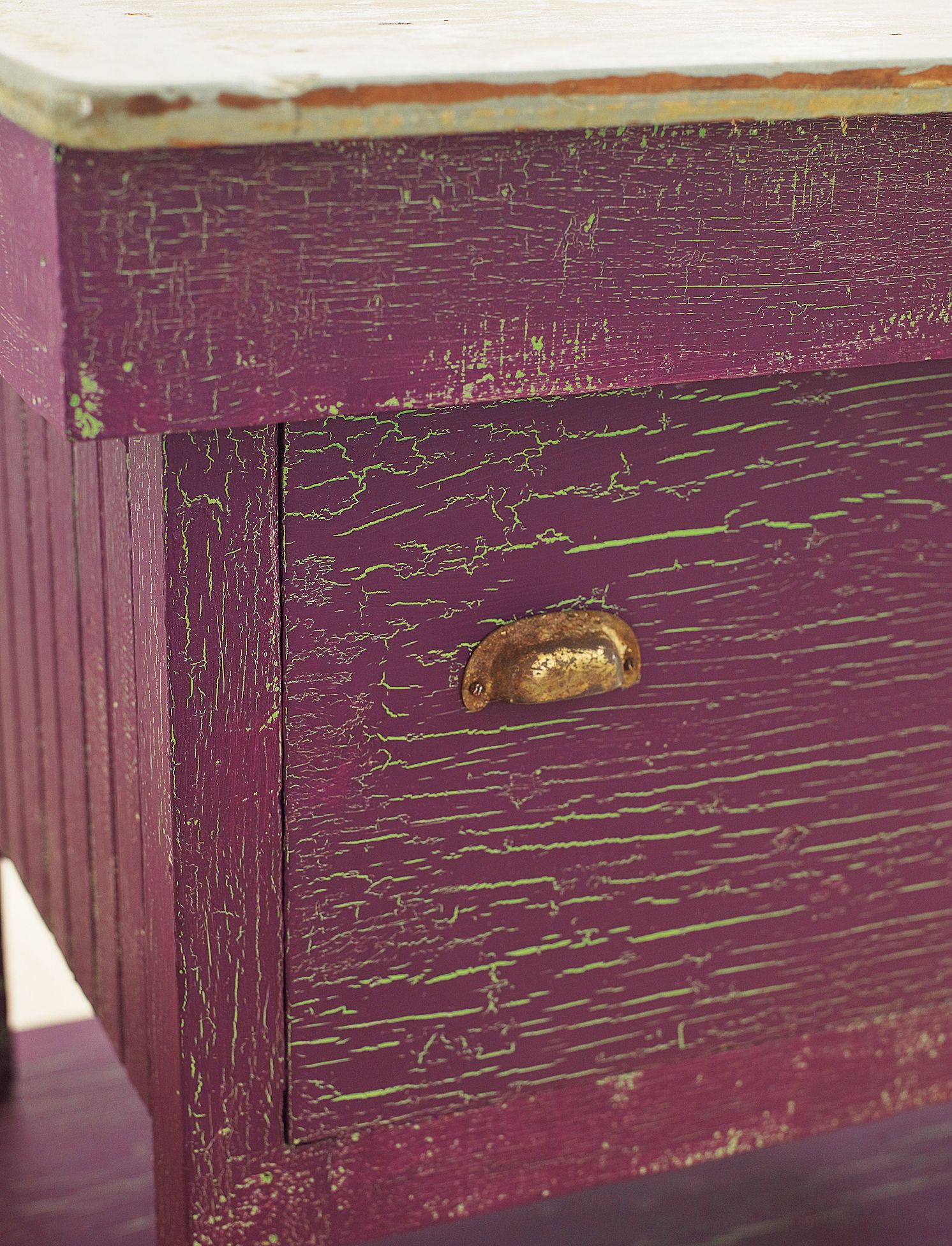
To artificially age the kitchen island shown here, decorative painter Ingrid Leess started by priming it, then brushing on a coat of flat lime green. The following day, she applied a thick layer of crackle medium, using a clean brush and taking care not to overwork it and dry it out. She let it dry for an hour (the medium must cure for 1 to 4 hours to work), then used a clean, dry brush to add a coat of purple. Soon after, it began to shrink, revealing bits of green—and faux history—beneath. A protective clear coat is an option, but an unvarnished finish reinforces the worn look.
Paint used in this article: Benjamin Moore’s Sweet Pea (base coat) and Autumn Purple (top coat)
Prime, Then Paint the Base Coat
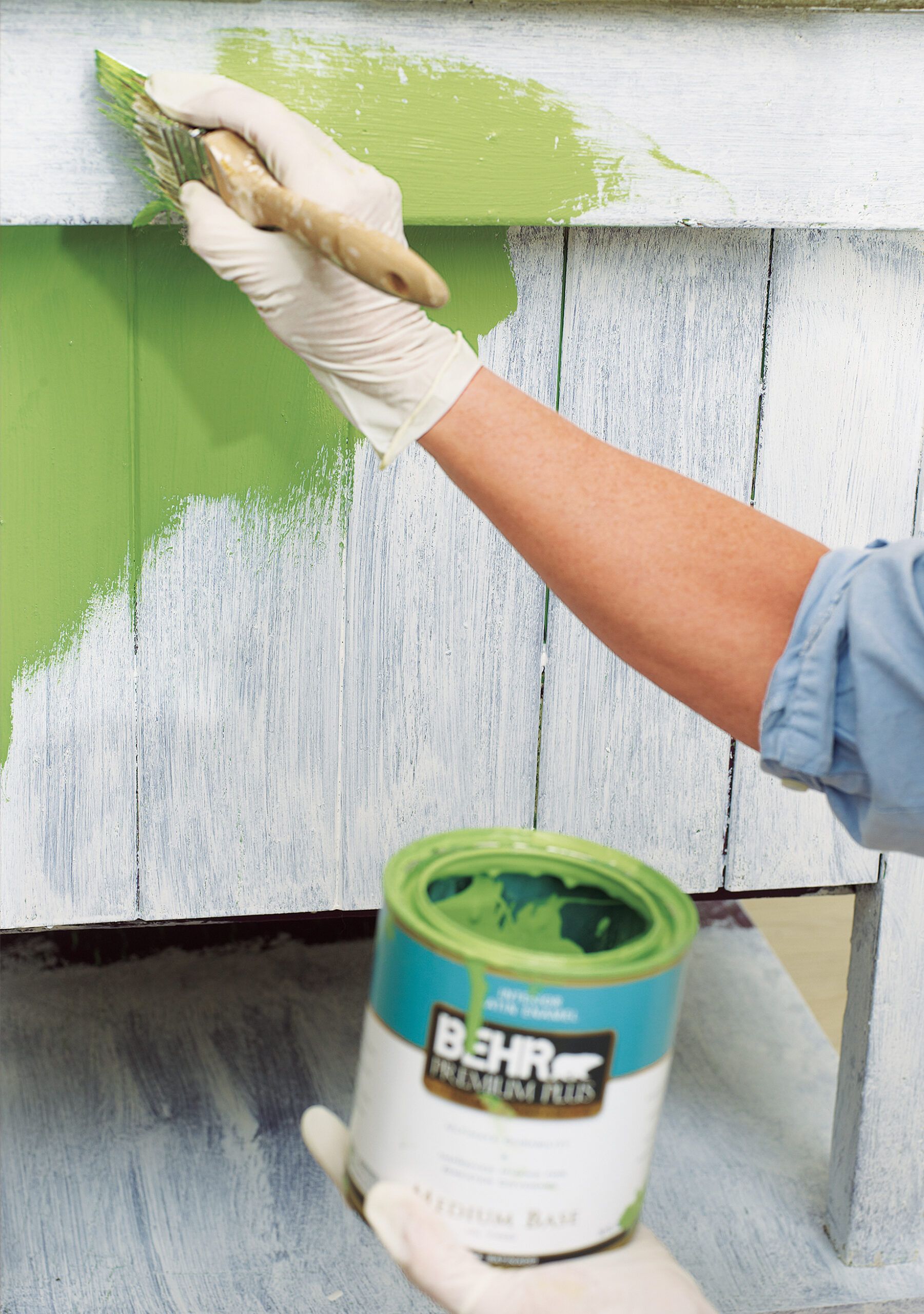
The first step in creating a crackle finish is preparing your furniture. Unlike other painting projects, you don’t need to worry about achieving a perfectly smooth surface—minor imperfections can actually enhance the aged look you’re aiming for. Begin by cleaning the piece with a damp sponge to remove any dirt or debris. Once dry, apply a coat of primer to ensure better paint adhesion.
After the primer has dried completely, apply the base coat. This is the color that will show through the cracks. Using a paintbrush, apply an even coat of flat latex paint in your chosen base color. Work in the direction of the wood grain, paying special attention to crevices and detailed areas. Allow this coat to dry overnight before proceeding to the next step.
Apply the Crackle Medium
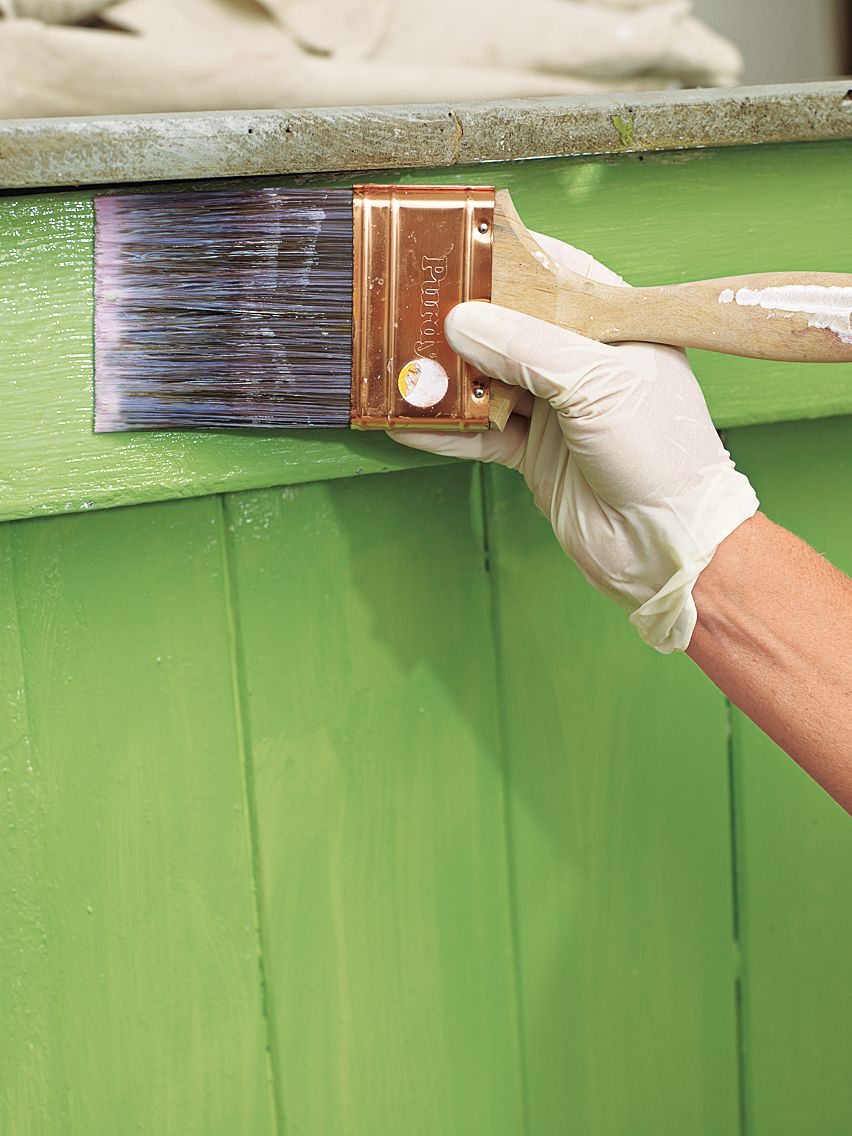
The crackle medium is the key to achieving the aged effect. This special product comes as a milky liquid that dries clear and creates the cracking effect in the top coat of paint. Using a clean brush, apply a thick, even layer of crackle medium over the entire surface of your furniture piece. Take care not to overwork the medium, as this can cause it to dry out prematurely and affect the final result.
The drying time for crackle medium typically ranges from one to four hours. During this time, the medium will become tacky to the touch. Be sure to apply the top coat while the medium is still in this tacky state—if it dries completely, the crackle effect won’t occur. Keep a close eye on the drying process and be prepared to move on to the next step at the right moment.
For best results, follow the manufacturer’s instructions on drying times and environmental conditions, such as humidity and temperature. These factors can also impact how the crackle medium behaves, potentially leading to different results than expected.
Paint the Top Coat
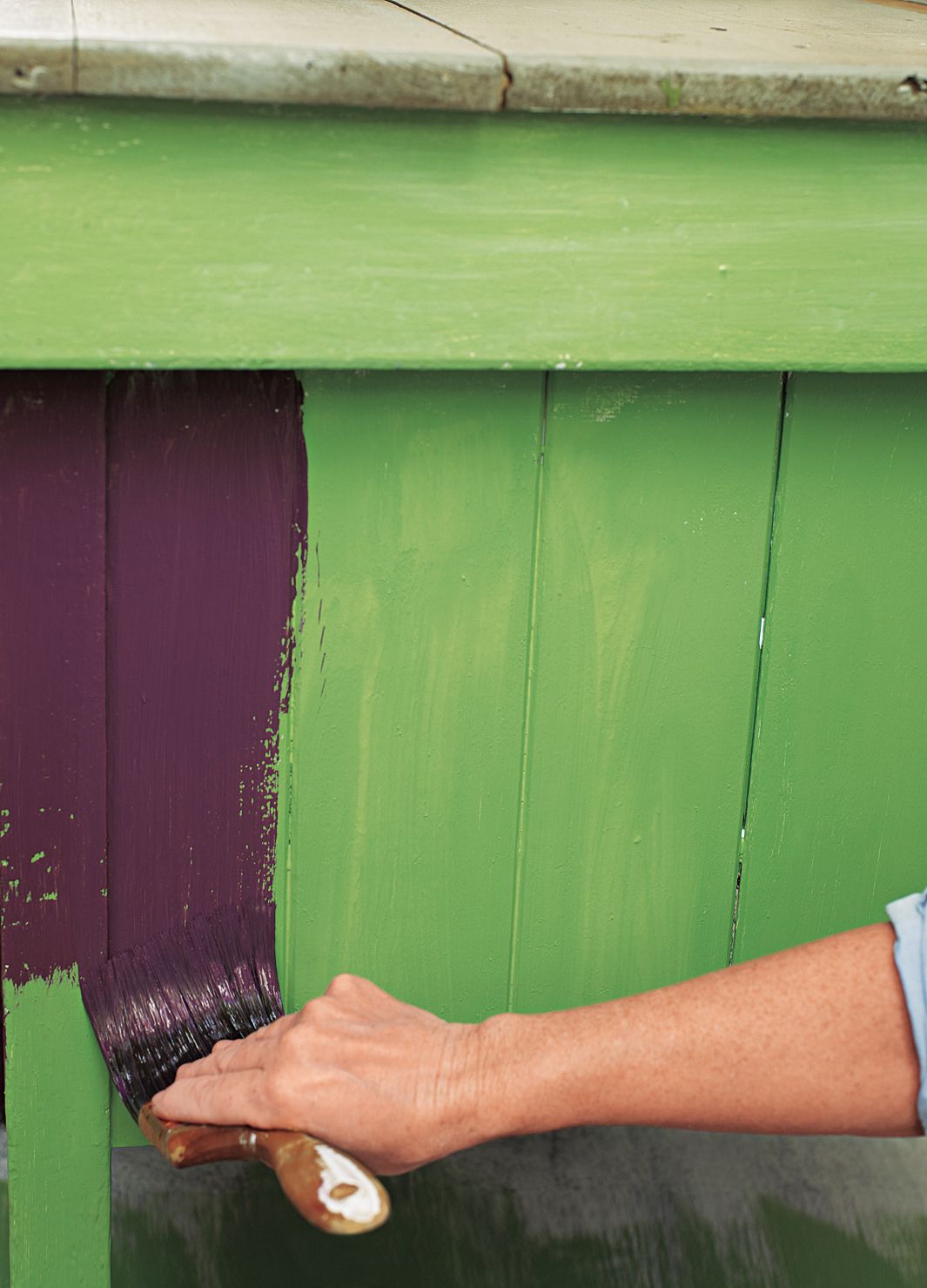
Once the crackle medium has reached the right level of tackiness, it’s time to apply the top coat. Using a clean, dry brush, apply your chosen top coat color in a flat finish. As you paint, you’ll begin to see the crackle effect taking shape almost immediately. The top coat will start to shrink and separate, revealing glimpses of the base color beneath.
Apply the top coat in a single, even layer for the most authentic aged look. Avoid going back over areas you’ve already painted, as this can disrupt the cracking process. If you’re aiming for a specific crackle pattern or want to emphasize certain areas, you can experiment with brush direction and paint thickness.
After you’ve finished applying the top coat, allow the piece to cure overnight before using it. This ensures the paint has fully set and the crackle effect is stable. Curing time may vary based on the paint brand and environmental conditions, so consult product guidelines for the best results.
Finishing Touches
While not always necessary, adding a clear protective coat is helpful for furniture that’s used frequently. For items such as tabletops, chair seats, or step stools, consider applying a satin clear coat to prevent chipping. However, if you’re going for the most authentic aged appearance, leave the piece unvarnished.
For more customization, consider additional aging techniques such as distressing edges with sandpaper or adding a light wash of antiquing glaze. These extra steps can help integrate the crackled finish with the overall character of the furniture. Distressing involves gently sanding areas where natural wear would occur, such as edges and corners, to expose the base coat or even the original wood.
Adding an antiquing glaze involves applying a diluted glaze over the entire piece and then wiping it away, leaving a subtle tint that adds depth and age to your crackle finish. Both techniques can be adjusted to your preference, allowing you to achieve the perfect balance between aged and elegant.
Our Conclusion
Creating a crackle finish on furniture is an easy way to add vintage charm to your home decor. This technique allows you to transform ordinary pieces into unique, character-filled focal points. With some patience and the right materials, you can achieve professional-looking results that will have everyone admiring your “antique” furniture finds.
